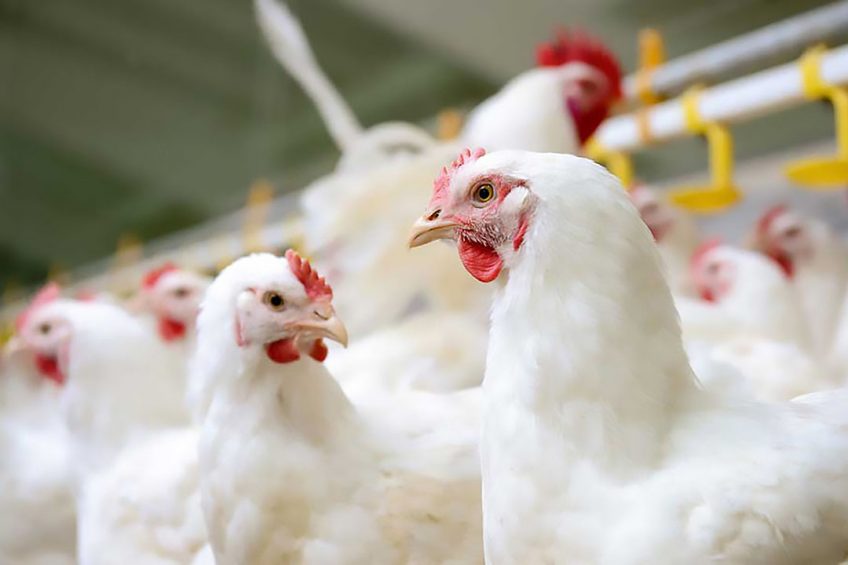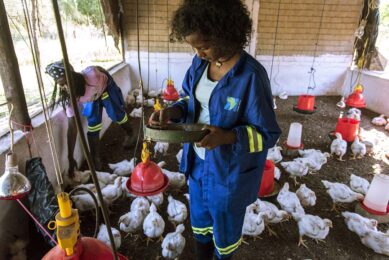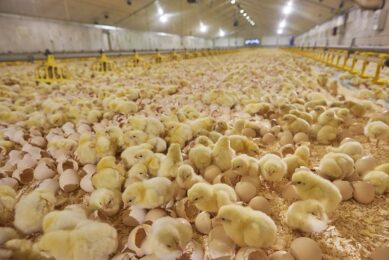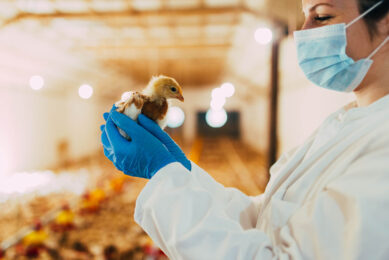Breaking the pathogen cycle

How can the poultry industry balance consumer needs and meet regulatory demands while maintaining an efficient and profitable production system? Safe food starts with proactive on-farm control.
Consumer trust in the food supply depends on delivery of consistently safe meat, milk and eggs. Yet despite the best efforts of meat and poultry producers and processors, food-borne pathogens like Salmonella and Campylobacter continue to challenge that trust. At the same time, consumers also demand products produced with less use of antibiotics – or without antibiotics altogether. And evolving food safety regulations complicate the situation even further.
Safe food starts with pathogen control in live operations. Along with implementing biosecurity and hygiene procedures, producers must implement practices to maintain animal health and reduce pathogen shedding. By controlling pathogens on the farm, producers can break the cycle of infection and reinfection and help make post-harvest food safety procedures more effective, thus decreasing food safety risks.
Gut is the primary target
When animals are exposed to pathogens the gut is the primary target, causing immunity to falter and leaving birds more susceptible to a range of diseases and opportunistic bacteria such as Salmonella. That’s why promoting a healthy gut lining is vital to make birds more resilient against environmental pathogens and other challenges. By managing challenges proactively and effectively in the gut, producers can reduce pathogen loads, enhance animal health and performance, and reduce the need for antibiotic treatments. An effective way to achieve these goals is by feeding birds Celmanax from Arm & Hammer Animal and Food Production. The refined functional carbohydrates (RFCs) in the product work by supporting beneficial bacteria in the animal’s digestive system, while blocking sites in the intestine for pathogen attachment. RFCs act in synergy against gastrointestinal tract (GIT) challenges to consistently improve performance and promote food safety.
Reducing Salmonella risk in poultry
Surveys show that poultry accounts for a higher percentage of Salmonella outbreaks than any other food commodity, with approximately 40% of tracked disease outbreaks linked to live poultry, eggs or processed poultry products. Because of the high prevalence of Salmonella, birds may be constantly at risk of infection. Vertical transmission of bacterial pathogens like Salmonella remains a critical issue throughout all stages of production, with reinfection promoting a cycle of disease on poultry operations. In vitro studies show that Celmanax can agglutinate and prevent adherence of several species of Salmonella, preventing bacteria from colonising in the GIT. This activity of RFCs in the gut translates to reduced Salmonella prevalence, as demonstrated in several research studies covering different stages of poultry production.
Broiler-breeder Salmonella control
In 2 independent studies, Celmanax supplementation in broiler breeder and broiler diets significantly reduced prevalence of Salmonella in the birds’ digestive systems as well as in the litter.
In the first study:
1,040 one-day-old broiler breeders were fed either a diet supplemented with RFCs, or a control diet without supplementation. Eggs from 51-week-old breeder hens were collected and hatched, and male progeny broiler chicks were fed supplemented diets.
Figure 1 – Treatment effects on prevalence of Salmonella in breeder hen caeca (%).

Tests of caeca showed that feeding RFCs to hens reduced Salmonella in the broiler breeder hens (Figure 1) as well as in their progeny.
In a second study:
With broilers, supplementation reduced Salmonella in birds and litter. One-day-old chicks received starter, grower and finisher diets with either 50 g/MT of Celmanax, or a control without. Researchers tested broiler caeca for the presence of Salmonella at 44 days of age and 55 days of age. Results showed Salmonella below the limit of detection in the broilers fed the supplement, compared with 45.8% presence in controls at 44 days and 29% prevalence at 55 days. In litter samples, Salmonella spp. were isolated in 7 of 48 control-fed broiler pens, but none in Celmanax-fed pens (Figure 2).
Figure 2 – Broiler treatment effects on incidence of Salmonella presence in litter (%).

Salmonella control in layers
Feeding trials with layers also demonstrate the effectiveness of RFCs in reducing Salmonella. In a commercial layer trial involving four houses with 60,000 to 90,000 hens per house, feeding the product reduced Salmonella presence and bird mortality, while improving egg performance and profitability. Pullets received a control diet containing a Lactobacillus product, or a diet with Celmanax from day 1 until 45 weeks of age. Environmental swab tests showed that RFCs reduced prevalence of environmental Salmonella, both at the end of the pullet phase (16 weeks) and in mid-lay (45 weeks.)
In another trial, researchers studied whether feeding Celmanax would affect colonisation of the digestive tract or ovaries of layer pullets challenged with Salmonella enteritidis at 16 weeks of age. One-day-old pullets received the supplement, either day 1 to study termination or week 10 to study termination. Controls received no RFCs. One week after the challenge, necropsies revealed Salmonella presence in all caeca samples from the challenged birds. However, the treatment reduced Salmonella by 1.5 log compared to untreated controls.
Reducing Campylobacter risk in poultry
Also important to the poultry industry is managing Campylobacter spp. in both live operations and processing plants. In commercial flocks, prevalence of Campylobacterjejuni can vary from zero to 100%, depending on the season. Prevalence is higher in summer. Although generally non-pathogenic in birds, C. jejuni can cause human enterocolitis through consumption of undercooked meat that is contaminated with the organism. Researchers studied the effect of RFCs on C. jejuni colonisation in broiler and turkey caeca and litter. Turkeys were fed either a control or supplemented diet from day one through 16 weeks of age. Broilers received a control or supplemented diet for 42 days. At the end of the feeding period, researchers found lower prevalence of C. jejuni in caeca as well as in litter.
Research supports the benefit of Celmanax as part of a multifactorial pathogen mitigation strategy in poultry production. Feeding RFCs helps reduce the presence of food-borne pathogens that can erode consumer confidence in the safety of the global food supply.
References available on request
Author: Sangita Jalukar, Technical Services Manager, Arm & Hammer Animal and Food Production
Join 31,000+ subscribers
Subscribe to our newsletter to stay updated about all the need-to-know content in the poultry sector, three times a week. Beheer
Beheer





 WP Admin
WP Admin  Bewerk bericht
Bewerk bericht